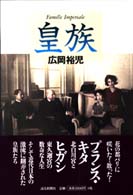- ホーム
- > 洋書
- > フランス書
- > ARTS ET BEAUX LIVRES
- > Arts decoratifs
基本説明
Pierre Chareau, aménagements et architecture, opère une synthèse sans précédent de près de de 80 chantiers d'architecture d'intérieur (1908-1938), privés ou publics, comme de ses projets architecturaux (1925-1950).
Il dévoile l'évolution de l'approche de Pierre Chareau en matière d'aménagement intérieur, de ses débuts de décorateur intégrant dans des espaces existants son mobilier, à l'avènement, au fil des projets, d'une approche résolument architecturale de l'espace, dans laquelle le meuble s'anime et devient architecture à part entière. Listant l'ensemble de ces chantiers, il livre une analyse détaillée et illustrée de vingt-cinq d'entre eux, en majorité commandités par trois familles, les Dalsace, les Bernheim et les Dreyfus.
Ce second volume permet de découvrir l'engagement de longue haleine du créateur pour l'architecture. Il revient sur sa participation aux CIAM comme à la Société des architectes modernes ou au Rassemblement des architectes, ainsi que sa collaboration avec la revue L'Architecture d'aujourd'hui. Il offre une analyse critique sur l'activité de Pierre Chareau architecte, en décryptant les 13 projets sur lesquels il a travaillé, en France, de 1923 à 1938, puis aux États-Unis, de 1945 à 1950, du cabanon de Djemil Anik à l'atelier de Robert Motherwell à East Hampton. Ce livre offre enfin une analyse approfondie de la Maison de verre. En dressant le portrait de Jean Dalsace et de son épouse Annie, il permet de comprendre le rôle central des commanditaires dans ce projet. Il revient sur le contexte architectural et sociétal de l'époque, expliquant l'importance de la lumière et de l'hygiène dans la Maison de verre.
Full Description
Pierre Chareau, aménagements et architecture is an unprecedented synthesis of almost 80 interior architecture projects (1908-1938), both private and public, and his architectural projects (1925-1950).
It reveals the evolution of Pierre Chareau's approach to interior design, from his beginnings as a decorator integrating his furniture into existing spaces, to the advent, over the course of his projects, of a resolutely architectural approach to space, in which furniture comes to life and becomes architecture in its own right. Listing all of these projects, it provides a detailed, illustrated analysis of twenty-five of them, most of which were commissioned by three families: the Dalsaces, the Bernheims and the Dreyfus.
This second volume reveals the designer's long-term commitment to architecture. It looks back at his involvement in the CIAM, the Société des architectes modernes and the Rassemblement des architectes, as well as his collaboration with the magazine L'Architecture d'aujourd'hui. It offers a critical analysis of Pierre Chareau's work as an architect, deciphering the 13 projects he worked on in France from 1923 to 1938, and in the United States from 1945 to 1950, from Djemil Anik's cottage to Robert Motherwell's studio in East Hampton. Finally, this book offers an in-depth analysis of the Glass House. By drawing up a portrait of Jean Dalsace and his wife Annie, it helps us to understand the central role played by those who commissioned the project. It looks back at the architectural and societal context of the time, explaining the importance of light and hygiene in the Maison de verre. The building site and its vicissitudes are described, followed by a description of the main principles behind the design of the house, and an analysis of its volumes and spaces.
Text in French.








